
Agate Stone: Nkyerɛaseɛ, Nneɛma, Nneɛma a Wɔde Di Dwuma & Nea Ɛkeka Ho
 Agate yɛ aboɔden abo a ɛyɛ emu ahoɔfɛ ho nhwɛso. Mpɛn pii no, sɛ wohwɛ chalcedony ahorow yi a, ɛte sɛ nea ɛnyɛ nea wɔpɛ. Nanso paapae agate bo bi mu, na dɛn na ebia wubehu? Mfinimfini a wɔayɛ no fɛfɛɛfɛ a wɔayɛ no fɛfɛɛfɛ a ɛhoahoa ne ho sɛ ɛwɔ kɔla ne nsusuwii a ɛhyerɛn.
Agate yɛ aboɔden abo a ɛyɛ emu ahoɔfɛ ho nhwɛso. Mpɛn pii no, sɛ wohwɛ chalcedony ahorow yi a, ɛte sɛ nea ɛnyɛ nea wɔpɛ. Nanso paapae agate bo bi mu, na dɛn na ebia wubehu? Mfinimfini a wɔayɛ no fɛfɛɛfɛ a wɔayɛ no fɛfɛɛfɛ a ɛhoahoa ne ho sɛ ɛwɔ kɔla ne nsusuwii a ɛhyerɛn.
Chalcedony yɛ quartz mineral abusua a ɛma wonya dɔte, aboɔden abo a wɔpɛ kɛse te sɛ onyx , jasper , mogya abo , ne agate. Nkurɔfo de agate ɔbo no adi dwuma mfehaha pii, na ne mfiase fi mfe 3,000 ni.
Kɔka yɛn ho ma yebehu agate abo ho nsɛm a ɛho hia nyinaa, a mfiase, bo a ɛsom, abakɔsɛm, sɛnea wɔde di dwuma, ne mfaso horow ka ho.
Momma yɛmfa agate nkyerɛase no mfi ase mfa mma wo saa aboɔden abo a ɛyɛ nnam yi ho nsɛm tiawa.

Agate Abo no ho nsɛm a wɔaka abom
Nneɛma a wɔde nwene nwene ne kɔla ahorow a ɛyɛ nwonwa a wɔahyehyɛ no ma agate yɛ aboɔden abo a egu ahorow a wotumi hu sen biara wɔ wiase no mu biako. Ahorow ahorow pii wɔ hɔ: ebi yɛ den, afoforo nso yɛ nea wɔde nhama ayɛ, wɔde ahama abɔ mu, ɛwɔ nsensanee, na wɔahyew. Afei nso, ahorow a wɔntaa nhu no ba bere a abɔde mu nneɛma ma wonya nsase a ɛyɛ fɛ ne po mu nhwɛsode ahorow no.
Wubetumi de agate bo biako ahyɛ wo nsa nifa mu na woakura biako wɔ benkum mu na woahu nsɛdi biara wɔ wɔn ntam. Nanso amansan nyinaa mu nneɛma no da sɛnea wɔahyehyɛ ɔbo no mu, na yɛbɛkyerɛkyerɛ mu akɔ akyiri wɔ asɛm yi mu.
Dɛn ne Agate Abo no?
Agate yɛ abotan ahorow a abu so a efi chalcedony mineral abusua no mu, nanso ne su ahorow no yɛ nea ɛtaa ba. A cryptocrystalline type of quartz , agate abo abusua no wɔ ahorow pii, na emu biara yɛ n’ankasa de soronko. Wubetumi ahu aboɔden abo no wɔ abɔde mu kɔla biara mu, efi brown so kosi lilac so kosi pink so kosi yellow so — ne biribiara a ɛwɔ ntam.
Ɔbo no nsusuwso ahorow nso gu ahorow saa ara. Agate abo yɛ nea ɛyɛ hann, na ɛda nsusuwii ahorow a ɛyɛ anigye a ɛnam nsɔe a ɛka ho a ɛsono wɔ chalcedony abo afoforo ho no adi. Agate ɔbo biako tumi da kɔla ahorow pii adi, na ɛma ɛyɛ nhwɛsode a ɛyɛ fɛ a ɛsono ɔbo biako koraa wɔ nea edi hɔ no ho.
Nneɛma a ɛyɛ tratraa, ɛyɛ den, ɛyɛ tratraa, ɛhyerɛn, ɛyɛ hann, ɛnyɛ hann, anaasɛ ɛyɛ kurukuruwa wɔ nhwɛsode biara mu, na ɛma wonya aboɔden abo soronko ahorow.
Ɔbo biara nya ne kɔla denam nneɛma nketenkete te sɛ manganese, chromium, nickel, dade, ne titanium a ɛne no di nkitaho no so. Polishing agate ne ɔkwan a eye sen biara a wɔfa so kyerɛ kɔla ne nsusuwso a ɛwɔ mu, a emu biara yɛ soronko.
Sɛnea wubetumi asusuw ho no, ɔbo a ɛyɛ anigye saa yɛ asɛm a wɔka, na ɛma ɛyɛ agude kɛse. Lapidaries ne agude yɛfo betumi de adwinni atwitwa abo no na wɔayɛ no fɛfɛɛfɛ na ama wɔada wɔn su foforo no adi yiye.
Agate Abo a Wɔahyehyɛ
Nneɛma pii na ɛma aboɔden abo yi honam ani hwɛbea ne ne su soronko, a yɛaka ho asɛm wɔ ase ha no.
Agate Nnuru a Wɔde Yɛ Nnuru: SiO2 (silicon dioxide) .
Aboɔden abo Adesuakuw: Chalcedony
Ahwehwɛ Nhyehyɛe: Hexagonal (afã abiɛsa) & cryptocrystalline
Ahorow: Ogya, Lace, Iris, Shell, Banded, Scenic/Mfonini, Nnua a Wɔayɛ no Abo, Plume, Moss, ne Dendritic
Kɔla ahorow: Kɔla ahorow nyinaa
Luster: Ɛyɛ waxy kosi srade kosi vitreous
Nneɛma a ɛda adi pefee: Ne titiriw no, ɛyɛ hann, ɛtɔ mmere bi a ɛnyɛ nea ɛda adi fã bi
Nneɛma a ɛyɛ den wɔ Mohs Scale so: 6.5-7.0
Nneɛma a ɛtwe ade ba fam pɔtee: 2.55-2.70
Nneɛma a ɛma nneɛma yɛ mmerɛw: 1.53-1.55
Nsonsonoe abien: 0.004
Cleavage: Biara nni hɔ
Apete: Biara nni hɔ
Ne kɛse: Agate abo dodow no ara yɛ nketewa, nanso ne kɛse betumi anyin akodu nsateakwaa pii na emu duru yɛ nkaribo pii.
Luminescence: Ɛtɔ mmere bi a, ɛhyerɛn wɔ nhama bi so fi efĩ mu
Ayaresa: Ɔhyew a wɔde sa yare ne nea wɔde kɔla yɛ

Abakɔsɛm ne Nea Ɛkyerɛ
Enti, ɛhe na agate fi, na ɔkwan bɛn so na yɛde ɔbo no di dwuma nnɛ? Agate ɔbo ntease no yɛ abakɔsɛm mu de nanso ɛwɔ nnɛyi mfaso nnɛ.
Mfitiase agate ntease no fi tete Hela nyansapɛfo, Theophrastus, a ɔde Achates Asubɔnten a ɛwɔ Sicily Anafo fam Atɔe wɔ afe 400 ne 300 A.Y.B.
Na asubɔnten no din, Achates, kyerɛ dɛn ase wɔ Borɔfo kasa mu? Agate!
Bere bi na asubɔnten no sen fa Helafo atubraman bi a abo no hyehyɛ nsu a emu nnɔ no so mfehaha pii, na enti, na ɛyɛ beae a nkurɔfo ani gye ho sɛ wobenya nneɛma no.
Wohuu agate ti so abo a wɔasen wɔ mmeae ahorow a wotutu fam hwehwɛ tetefo nneɛma mu fi Kɔbere Mmere no mu, a Knossos beae a ɛwɔ Crete, Greece ka ho. Wɔ Mfinimfini Mmere no mu no, na aboɔden abo no yɛ nkaa ade a agye din a adehye de yɛ signet nkaa (nkyerɛwde a wɔde wɔn nsa hyɛ ase a nnipa atitiriw de di dwuma.)
Ɛnnɛ, agate ne Gemini zodiac awobo (May 21-June 21), a egyina hɔ ma kari pɛ, ahoɔden, ne biakoyɛ.
Agate Ahorow Ahorow
Agate ahorow pii wɔ hɔ, na wɔakyekyɛ mu sɛnea nipadua no su te. Sɛ nhwɛso no, ahama agate wɔ akuru a ɛyɛ nwonwa a ɛte sɛ ahama, bere a ogya agate da nyankontɔn a ɛyɛ hyew a ɛyɛ hyew adi. Sɛ yɛhwɛ nsonsonoe a ɛwɔ kɔla ahorow mu a, yɛn nyinaa betumi agye atom sɛ agate abien biara nni hɔ a ɛyɛ pɛ!
Ebia ɛbɛyɛ wo nwonwa sɛ wubehu nsakrae soronko a efi ɔbo biara mfiase ne sɛnea ɛyɛe mu ba no bi. Momma yɛnhwehwɛ mu!
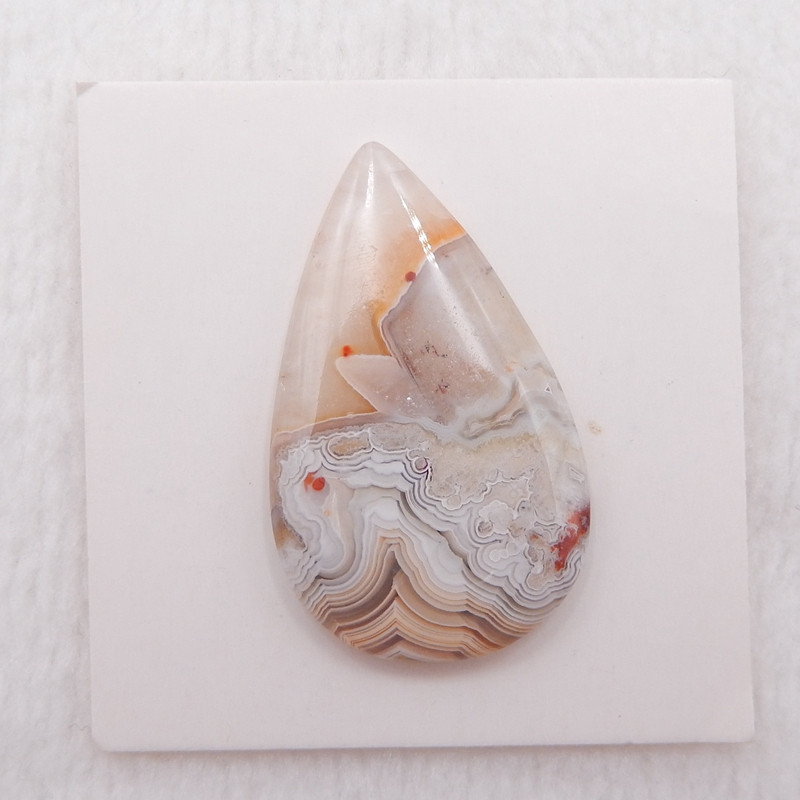
Banded a wɔde abɔ mu
Nea agye din sen biara ne banded agate , a ɛwɔ baabiara na wonya fi wiase nyinaa. Banded agate ka emu nneɛma biara a ɛyɛ kɔla a ɛyɛ hyew na ɛyɛ nsensanee a wɔtaa de kɔla gu mu de ma kɔla ahorow a ɛwɔ mu no yɛ fɛ ho asɛm. Paapae geode ɔbotan bi mu, na ebia wobɛto hintidua wɔ agate fɛfɛ bi a wɔde nhama ayɛ so!

Iris na ɔkyerɛwee
Iris agate yɛ Montana agate a wɔayɛ no fɛfɛɛfɛ a ɛda kɔla a ɛyɛ nwonwa a ɛyɛ nwonwa adi. Bere a kɔla nsakrae a ɛte sɛ nyankontɔn no yɛ nwonwa no, wotumi hu wɔ akyi kanea ase nkutoo. Wɔ hann a ɛfata mu no, nhama a ɛyɛ tratraa no yɛ nufusu na ɛnyɛ anifere. Nkrabea ankasa no ba bere a wode kanea bi si aboɔden abo no akyi, na ɛda “iris” nkɛntɛnso adi bere a hann no fa ɔbo no nhama nketenkete no mu esiane diffraction nti no. Ɛtɔ mmere bi a, Iris agate abo nso tumi da chatoyancy , a wɔsan frɛ no "cat's eye effect" adi.
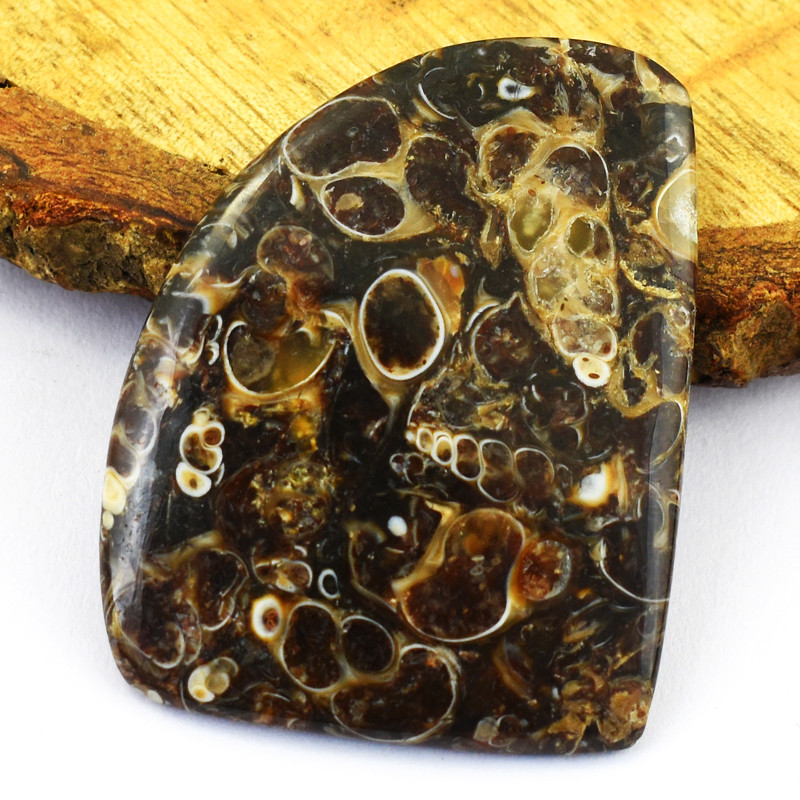
Hono
Sɛ quartz nyin wɔ po mu abon mu a, dɛn na wunya? Turritella “akorade” agate yɛ agate a ɛyɛ nwonwa wɔ baabi a ɔbo no nyin wɔ nsu pa akorade a wɔatutu fam ayɛ mu . Mpɛn pii no, shell agate nyin wɔ gastropods a ɛwɔ abon atenten a ɛte sɛ nkuruwankuruwa mu. Bere tenten mu no, silicic acid dan chalcedony na ɛboro akorade no so, na ɛma ɛyɛ ɔkraman a wunhu da biara da!

Ogya
Ogya agate fi Mexico nkutoo. Sɛ ɛnyɛ opal a , agate yɛ aboɔden abo kakraa bi a ɛda neon, kɔla a ɛte sɛ nyankontɔn adi fi awosu mu no mu biako . Nkɛntɛnso no da adi fi limonite a wɔde ka ho a ɛma ogya iridescence ba no mu.
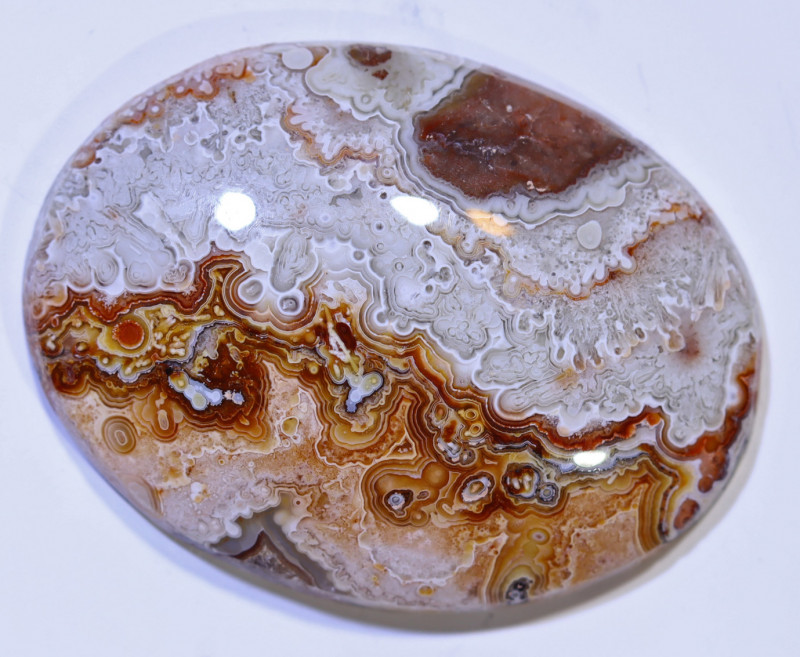
Lace a wɔde ayɛ
Nea ɛkyerɛ sɛ ahorow ahorow wɔ hɔ ma obiara ne lace agate, adwini a ɛyɛ mmerɛw na ɛyɛ swirly a wɔde asonse, akutu, ne anhwea nne ayɛ. Lace agate fi Mexico titiriw na ɛma wɔde asase mu fɛ a ɛyɛ nwonwa a wɔde kɔla ahorow a ɛyɛ mum ayɛ nsusuwso a emu da hɔ a ɛne ne ho di nsɛ. Nneɛma a agye din a wɔpaw no bi ne blue lace agate ne Laguna lace agate .

Scenic anaa Mfonini
Sɛ w’ani gye sɛ wobɛto hintidua wɔ agate a ɛte sɛ Bob Ross mfonini a wɔakyere wɔ ɔbo mu so a, fa saa ahoɔfɛ no hyɛ! Agate a ɛyɛ fɛ yɛ ademude nketenkete a ɛkyerɛ abɔde mu nneɛma a ɛyɛ fɛ a nneɛma a wɔde ahyɛ ɔbo no mu ka ho. Nneɛma a wɔtaa hu ne nsase, mpoano, nnua, nnuadewa, atare, ne awi sare.

Nnua a Wɔayɛ no Aboɔ
Pacific Atifi fam Atɔe ne wim tebea a eye sen biara ma nnua a wɔfrɛ no agate a wɔayɛ no abo. Te sɛ shell agate no, petrified wood agate de nneɛma abien fra, nanso wɔ eyi mu no, ɛyɛ nnua a wɔatutu fam ahu mmom sen gastropods! Saa aboɔden abo a nnua ayɛ yi yɛ nwonwa na nea efi tete nnua ntini a wɔde agate a ɛyɛ ahwehwɛ sii wɔn mu ananmu wɔ mfe ɔpepem pii mu no mu ba.
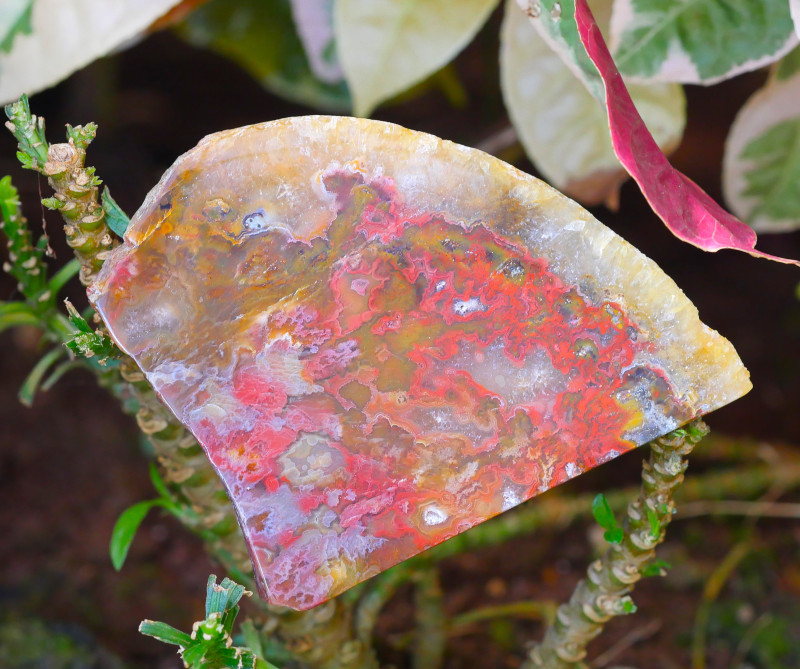
Plume, Moss, ne Dendritic a wɔde yɛ nneɛma
Te sɛ agate a ɛyɛ fɛ no, saa nhaban ahorow yi yɛ afifide ne mmoa a ɛnam mineral oxides kakraa bi a ɛma nsɔe a ɛyɛ kɔla ahorow ka ho na ɛde ba no ho mfonini. Moss agates wɔ afifide nsusuwii, plume agate wɔ ntakra nsusuwii , na dendritic agates wɔ nnua nkorabata a ɛka ho. So aboɔden abo bi wɔ hɔ a egu ahorow te sɛ agate? Sɛ saa a, ɛnde yennya nhuu bi!

Fossil Fisheye a wɔatutu fam ahu
Fossil fisheye agate yɛ nea ɛyɛ translucent kosi opaque a ɛwɔ kɔla ahorow pii fi pink, yellow, red, ne green so kosi nea enni afã biara te sɛ grey, black, ne brown so. Ɔbo no din fi ne signature floating orbs a ebetumi ayɛ sɛ... yiw, mpataa aniwa!
Mpɛn pii no, ɔbo no da bruu ahorow ahorow adi, efi krim so kosi bruu tuntum so, anaasɛ ɛnne ahorow a ɛyɛ nwini te sɛ kwae mu ahabammono ne po bruu. "Orbs" no taa nya akyi nhama a ɛyɛ krim kosi fitaa, na ɛkame ayɛ sɛ ɛte sɛ amoeba. Abo a wɔfrɛ no fisheye agate abo a wɔatutu fam ahu no fi ogya bepɔw mu abotan a ɛyɛ hyew, abotan a ɛgye ahɔho, ne agate a wɔaka abom bere a wɔreyɛ ɔbo no mu.
Agate a Wɔde Nneɛma Ayɛ
Aboɔden abo dodow no ara wɔ nneɛma a wɔde si ananmu, na saa ara na ɛte wɔ agate ho. Agate a wɔayɛ wɔ lab no de ɔhyew a ano yɛ den ne aduru a wɔde yɛ nneɛma di dwuma wɔ ɔdan bi mu. Bere a synthetic agates ma sikasɛm-adamfofa kwan a ɛte sɛ abɔde mu agate, ɛnyɛ baabiara a egu ahorow na abɔde mu nwonwa te sɛ abɔde mu agate ahorow a yɛabobɔ din wɔ atifi hɔ no.
Ɛwom sɛ mfiridwumayɛfo san yɛ abɔde mu nyin kwan no sɛnea ɛfata de, nanso kɔla ahorow a ɛwɔ hɔ ne nneɛma a wɔde yɛ nneɛma a wɔatutu fam ahu a wɔde ka ho no yɛ biribi a Maame Abɔde betumi ayɛ pɛ ara kwa!

Agate a wɔayɛ no aduru
Ɛtaa ba sɛ wɔde ɔhyew aduru bedi dwuma de ayɛ agate na ama kɔla ahorow a ɛwɔ mu no ada adi. Chalcedony yɛ ade a ɛwɔ abon a edi nnuru a wɔde yɛ nneɛma ho dwuma yiye. Ɛsɛ sɛ wɔkyerɛw nneɛma a wɔde yɛ aduru a ɛma nneɛma yɛ yiye bere nyinaa anaasɛ wɔn a wɔtɔn no da no adi efisɛ ɔkwan a wɔfa so yɛ no yɛ nsakrae.
Sɛ wɔde nnuru a wɔde yɛ nneɛma di dwuma a, agate a ɛyɛ fitaa a ɛyɛ mmerɛw no betumi adan kɔkɔɔ, bruu, anaa ahabammono a emu da hɔ. Adeyɛ no fii ase wɔ Germany wɔ 1800 mfe no mu. Agate a bere bi na ɛdɔɔso wɔ kurow bi a wɔfrɛ no Idar-Oberstein mu no sae. Nea ɛbɛyɛ na wɔadi nea wɔhwehwɛ no ho dwuma no, Amerika Kesee Fam atubrafo de agate a ɛyɛ fitaa kɔɔ ɔmantam no mu kɔhwɛɛ wɔn yare.
Nea afi mu aba? Agate abo a ɛyɛ fɛ a ɛyɛ kɔla ahorow a ɛhyerɛn foforo a wɔde ma. Agate ayaresa abu so yiye na egyina pintinn, a ɛkyerɛ sɛ ɛrensɛe ɔbo no, na nea efi kɔla mu ba no yɛ nwonwa. Ebia ahotewfo bɛpɛ abo a ɛwɔ kɔla ahorow a efi awosu mu, nanso, kɔla a ɛhyerɛn a wobehu wɔ bruu ne kɔkɔɔ mu no ho yɛ na koraa, enti wɔyɛ adeyɛ a wɔtaa de sa yare.

Agate Kɔla ahorow
So agate kɔla biako ankasa wɔ hɔ? Sɛ wususuwii sɛ dabi a, na woayɛ no yiye. Agate ɔbo biara nyin wɔ ɔkwan soronko so, na ehyia nneɛma ahorow a ɛka ne nsusuwii ne ne kɔla. Bere a eyi wɔ w’adwenem no, kɔla biako pɛ nni hɔ efisɛ aboɔden abo no gu ahorow yiye. Ɛtaa ba sɛ wubehu agate wɔ kɔla biara mu, a kɔkɔɔ, bruu, borɔdɔma, tuntum, fitaa, fitaa, kɔkɔɔ, pink, bruu, ne kɔla ahorow pii ka ho.
Agate kɔla a efi awosu mu bɛsakra afi ɔbo so akɔ ɔbo so, na mpɛn pii no, aboɔden abo ho animdefo de ayaresa ahorow di dwuma de ma ɔbo no kɔla yɛ kɛse na ɛma ne mu nsusuwii yɛ kɛse.
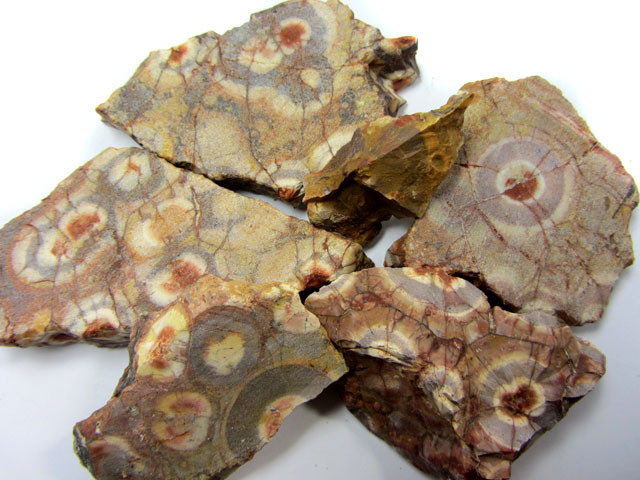
Mmeae a Wɔtu Tuo
Ɛhe na agate bo fi? Agate yɛ nodules mu wɔ silica a ɛwɔ ogya bepɔw mu abotan ne amena mu. Sɛ abura no hyɛ mu ma pɛ a, agate dodow no ba nanso egyaw mu tokuru bi a ahwehwɛ a ɛyɛ quartz no pue na ɛwosow ma ɛyɛ nwonwa.
Wɔ nodule biara mu no, kɔla ne nsusuwso ahorow a ɛtoatoa so ne ntoatoaso wɔ hɔ. Nokwarem no, agate biara wɔ n’ankasa nhyehyɛe a abura a enyinii wom no na ɛyɛe.
Nanso, ɛnyɛ den sɛ wobɛto hintidua wɔ biako so a wunnim efisɛ sɛ wohwɛ akyi a, ɛte sɛ ɔbotan a wɔtaa de di dwuma. Twitwa mu, na wobɛda ahoɔfɛ a ɛwɔ mu adi: nsensanee a ɛyɛ kɔla ahorow, nsusuwso, ne nsusuwii ahorow a ɛyɛ fɛ.
Nea ɛbɛyɛ na wɔada aboɔden abo no mu ahoɔfɛ adi no, lapidaries de cabochon kwan so yɛ polish, slice, na tumble agate . Nea ɛnte sɛ aboɔden abo a ɛwɔ afã horow a ɛda ntwitwiridii soronko te sɛ daimond anaa safir adi no, agate hwɛ yiye sɛ wɔayɛ no fɛfɛɛfɛ, na ɛma ɛyɛ ade kɛse a ɔboaboa ano.
Yɛaka sɛ agate biara yɛ soronko, na ɛno te saa efisɛ mfiase di dwuma wɔ ɔbo no su ahorow a ɛda nsow no mu. Awiei koraa no, yebetumi agyina nea ɛwɔ mu ne nea ɛka ho so ahu faako a ɔbo no fi bae. Ɛyɛ fɛ yiye, ɛnte saa?
Momma yɛnhwɛ fibea biara ne agate a ɛde ba.
Nneɛma a wonya fi mu
Mexico: Ogya agate, ahama agate, banded agate
Wyoming ne Montana (Yellowstone National Park, U.S.A.): Agate a ɛyɛ fɛ, Wyoming iris agate
United States: Moss agate, banded agate, lace agate (Arizona), nnua a wɔayɛ no abo (Arizona, New Mexico, California, Washington, Oregon) .
Scotland: Nnua a wɔfrɛ no Moss agate
India: Nsɔe a wɔfrɛ no agate
Indonesia: Nsɔe a wɔfrɛ no Moss agate, Indonesiafo agate
Brazil, Uruguay, Madagascar: Agate a wɔde abɔso ayɛ
Namibia: Agate a wɔde ahama ayɛ
Dɛn na agate bo ye ma? Wɔ ɔfã a edi hɔ no mu no, yɛbɛhwehwɛ mfaso a ɛwɔ agate abo a agye din so.

Agate Mfaso ne Nea Wɔde Di Dwuma
Agate yɛ ɔbo a egu ahorow, na ɛma wotumi de di dwuma ne mfaso pii. Mpɛn pii no, agate yɛ agude a wɔde yɛ adwini , nneɛma a wɔde siesie fie , ne agude. Sɛ woakɔ Nanabea agude a wɔaboaboa ano no mu pɛn a, ebia woato hintidua wɔ cameo a ɛyɛ nwonwa so! Cameo yɛ aboɔden abo a wɔde ayɛ a wɔde anim, nipadua, anaa onipa bi a wɔadi adwini a ɛyɛ nwonwa a ɔwɔ ahotɔ ohoni a wɔama so adi.
Mfe mpempem pii ansa na wɔretwa mfonini no, na cameo yɛ ɔkwan a wɔfa so ka obi abakɔsɛm na egyina hɔ ma nnipa atitiriw. England Ɔhemmaa Victoria I maa cameo a wɔhyɛ gyee din, na ɛmaa ɛbɛyɛɛ mmea ntadehyɛ a wɔtaa de di dwuma a agye din a wɔde agate ayɛ.
Wɔ cameo akyi no, agate yɛ ade a agye din a wɔpaw ma agude a wɔde nhwiren ayɛ te sɛ nkapo, kɔnmuade, ne asomuade.
Esiane wɔn mu fɛfɛ nti, agate nnua a wɔayɛ no fɛfɛɛfɛ yɛ nneɛma a wɔde siesie fie a ɛyɛ nwonwa. Sɛ woakɔsra w’adamfo anaa w’abusuafo bi pɛn na woahu ɔbo bi a ɛda nsow a emu da hɔ a ɛwɔ kɔla ahorow a ɛwɔ so a, ɛda adi sɛ ɛyɛ agate a wɔde ayɛ.
So agate yɛ ɔbo a ɛyɛ anigye? Agate ayaresa ahoɔden to nsa frɛ nneɛma pii ne anigye. Ahwehwɛ ayaresa ho animdefo pii de agate di dwuma de to nsa frɛ yiyedi, akwahosan pa, ne ahonyade.
Agate Botae a Wɔde Di Dwuma
Sɛ yesusuw nea yɛaka afa agate bo no ho nyinaa ho a, so ɛsom bo? Wubesusuw sɛ ɔbo a egu ahorow na emu yɛ fɛ saa no bɛma nneɛma bo ayɛ den, nanso ɛnte saa. Agate yɛ nwonwa sɛ ne bo yɛ den efisɛ ɛyɛ mmerɛw sɛ wobenya. Bere a nneɛma a wɔde yɛ no bo nyɛ den no, adwinni a ɛwɔ asinasin bi akyi no ne baabi a ne bo kɔ soro.
Agate a wɔbɛma ayɛ fɛ na ama wɔada ne mu ahoɔfɛ adi yiye no yɛ adwinni. Nhwɛsode a ɛda nsow sen biara — titiriw agates a ɛyɛ fɛ — na ne bo yɛ den sen biara. Wɔn a wɔboaboa nneɛma ano de mpempem pii bɛto nneɛma a wɔayɛ no sɛnea wɔpɛ anaa ahorow a wɔntaa nhu mu. Nanso, sɛ worehwehwɛ agate agude ne nhwiren a ɛnyɛ den a , worenhyia ɔhaw biara sɛ wubenya nneɛma a ne bo nyɛ den.
Wɔ Agate a Wɔhwehwɛ no Ho?
Agates yɛ aboɔden abo a ɛda nsow. Te sɛ asono abien biara nni hɔ a nsensanee yɛ pɛ anaasɛ nnipa nni nsateaa nkyerɛwee koro no, agate abien biara nni hɔ a ɛyɛ pɛ! Sɛ wokura agate abien a efi nodule koro mu mpo a, anka wɔbɛda su ahorow adi wɔ wɔn kɔla ahorow mu. Ɛno na ɛma agate bo no yɛ nea wɔpɛ na ɛyɛ anigye sɛ wɔbɛhyɛ!
So worehwehwɛ agate? Hwehwɛ yɛn agate abo, nsusuwso, nhwɛsode a ɛyɛ mmerɛw, ne cabochons a yɛaboaboa ano no mu nnɛ!
搜尋Gemstone Encyclopedia
相關拍賣
相關文章
Obiara wɔ aboɔden abo a ɛne ne nsoromma agyiraehyɛde hyia. Wɔsan frɛ eyinom sɛ wo Nsoromma Abo. Sua pii fa saa abo yi ho na hwehwɛ nea wo Nsoromma Abo no yɛ.
10th May 2018
Mfiase no na wɔde Awo Abo anaa aboɔden abo no bata nsoromma mu hwɛ anaa ɔsram a ankorankoro bi awo ho. Hwehwɛ nea wo bo no yɛ na hwɛ abo a yɛwɔ sɛ yɛtɔn no
8th Feb 2021
Gem Rock Auctions wɔ Certified Gemstones a ɛso sen biara wɔ intanɛt so no mu biako. Hwehwɛ aboɔden abo sɔhwɛ afiri a wɔapene so yi mu.
24th Jul 2018
最新的文章
Chrysanthemum nhwiren abo yɛ abɔde mu anwonwade a ɛwɔ calcite, celestite, anaa andalusite nhwiren fitaa bi a wɔde asisi limestone tuntum anaa atɛkyɛ abo so.
13th Jan 2026
Rainbow lattice sunstone yɛ feldspar ahorow a ɛwɔ optical nsunsuanso abiɛsa fɛfɛ a efi nneɛma ahorow a wɔde ka ho a ɛwɔ hɔ no mu ba. Ɛyɛ ogya kɔla display ne lattice nsusuwso ma ɛyɛ coletor abohene a wɔntaa nhu!
12th Jan 2026
Thulite yɛ Norwayfo aboɔden abo a wɔntaa nhu a ɛda rosy hue a ɛyɛ hyew a efi zoisite mineral abusua a wɔtaa de di dwuma wɔ agude tebea ne pendants mu adi.
6th Jan 2026
文章類別
How To's is where you will find helpful articles from gem Rock Auctions on how to cut gemstones, select gemstones and buy gemstones.
9文章






